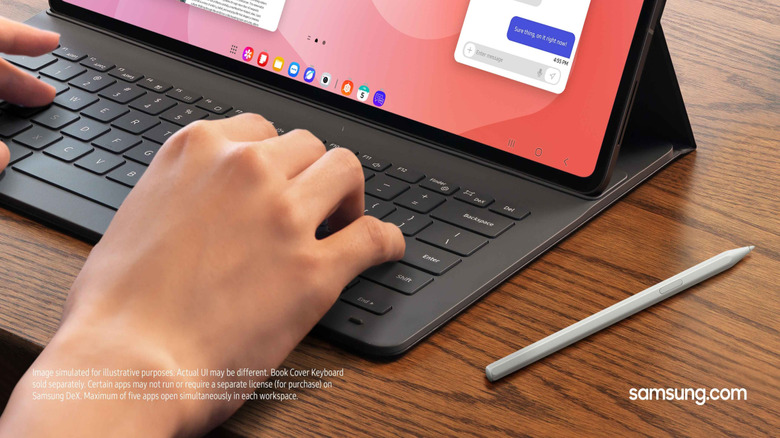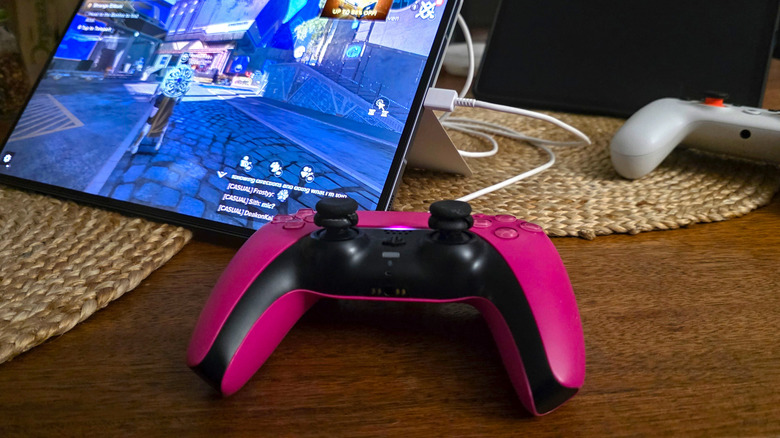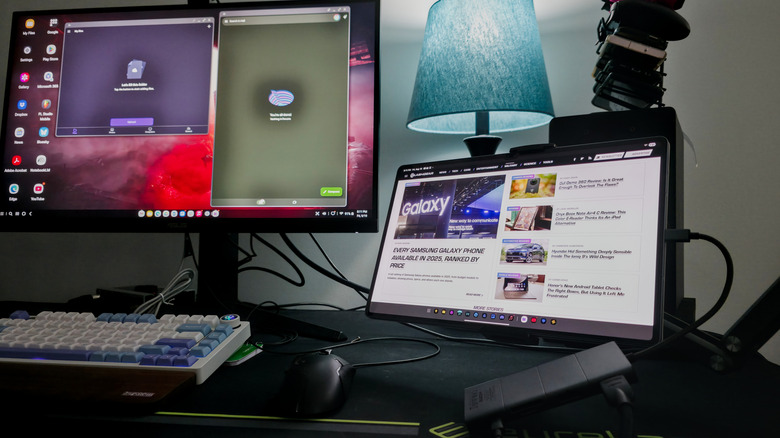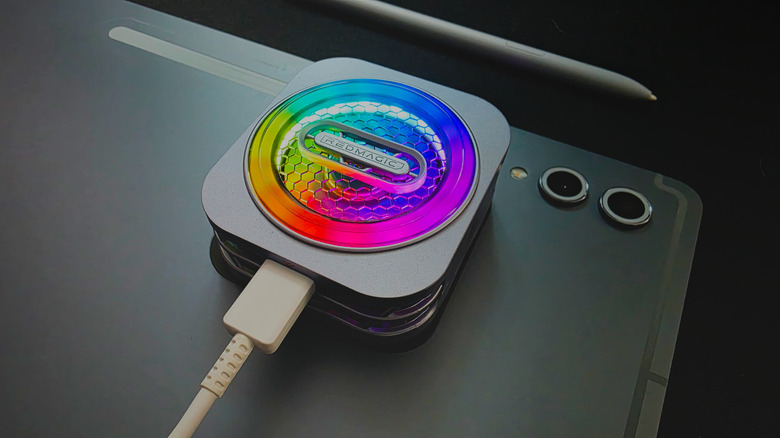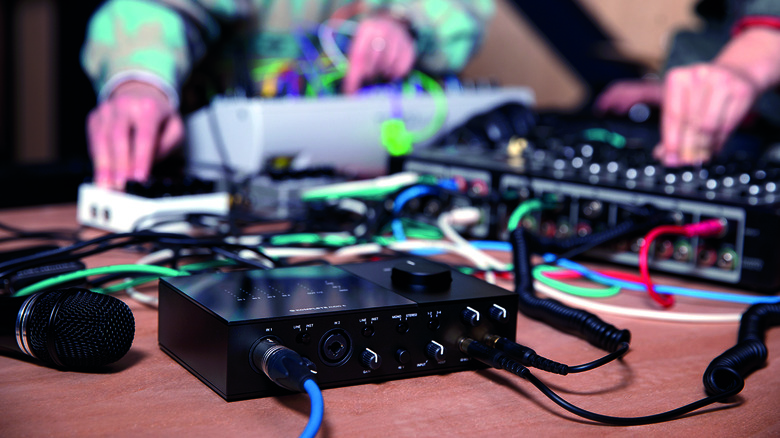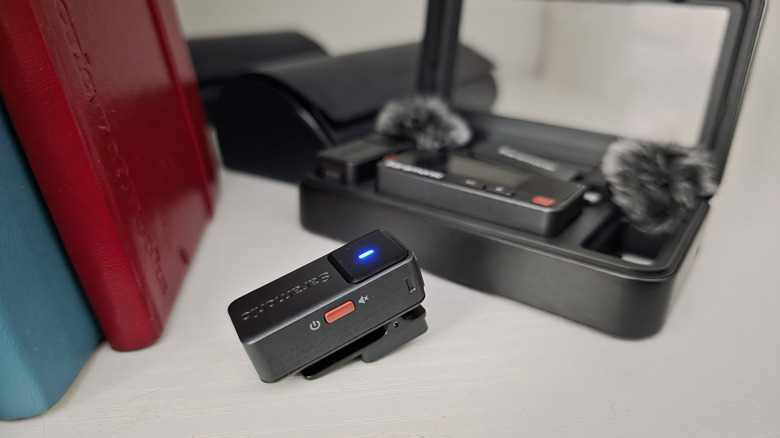5 Uses For Your Android Tablet's USB-C Port
We may receive a commission on purchases made from links.
Android tablets are better than ever, with powerful processors and dazzling displays. But one of their most underrated features is the USB-C charging port. Most people use the Type-C port solely to top up on power, ignoring the nearly unlimited possibilities it unlocks. Of course, your tablet's USB-C port is great for just about anything you'd expect. You can plug in flash drives or SSDs to transfer files, connect a mouse or keyboard, or mirror the display on an external monitor or TV with the right type of USB-C adapter. Those are far from your only options, though.
With over a decade of using and writing about Android tablets, I've found some truly game-changing uses for their USB-C ports. For instance, here's a relatively simple tip: using a USB cable and an app like spacedesk, you can turn your Android tablet into a second display for your Windows PC. But that's just the start; I had to squeeze it in up here because there are far more exciting applications for that multitalented little connector. So, here are five things your Android tablet is capable of thanks to its USB-C port, and how to set them up.
Take tablet gaming to the next level with a controller
Android excels at gaming these days, and many of those experiences are easily enjoyed on a tablet. Whether you're playing mobile forward titles like "Genshin Impact" and "Diablo: Immortal," enjoying retro games through an emulator, or streaming PC games from the cloud with GeForce Now or Xbox Game Pass, capable Android tablets let you experience the action on a more immersive display than a smartphone. However, touch controls in video games can feel pretty terrible, and holding a tablet for hours isn't comfortable. The solution? Plug a gamepad into your Android tablet's USB-C port.
Nearly any game controller will work when connected to your Android device's USB-C port. That includes PlayStation controllers for the PS4 or PS5, Xbox controllers, and many generic controllers. If you have a small enough tablet, you may even be able to connect something like the Backbone or cheaper alternatives, turning your device into a Nintendo Switch-style handheld. Controllers made specifically for PCs, like the Scuf Envision Pro, do not work well and are among the rare exceptions in my testing. For supported controllers, the process is plug-n-play — no extra apps or setup needed.
Any issues you run into with gamepads on Android are likely to be app-specific. I've had to fiddle with GeForce NOW to get things working in the cloud, for instance, and there's no controller support in some local games like the newly released Android adaptation of acclaimed RPG "Disco Elysium." On the other hand, the new "Destiny: Rising" has excellent native controller support that even allows you to tweak acceleration curves and ADS sensitivity.
Turn your tablet into a PC replacement with a USB-C dock
It's easy to think of Android tablets as light productivity or entertainment devices meant for streaming video and checking email. While it's true that no Android tablet has the desktop-class processing power of the latest iPad Pro models, they're still quite capable for most productivity tasks. Over a year ago, I replaced my laptop with a Samsung DeX setup, and I'm still using it to write this. But to take full advantage of your tablet as a computer replacement, you'll need a USB-C dock or hub. I keep an Anker 565 USB-C Hub at home because of its robust port selection, but you should look for a product that meets your specific needs.
With a USB-C hub, you can connect your Android tablet to a monitor, plug in a LAN cable for faster and more stable Internet speeds, use wired mice and keyboards, and connect flash drives or SD cards on the fly. You can even add back a 3.5mm headphone jack for wired audio. For now, this type of setup works best with a Samsung Galaxy Tab device that supports Samsung DeX (the company's desktop environment for Android), but Google is working on an upcoming desktop mode, making it easier to use an Android device as your next desktop PC.
You won't be able to do demanding work like 3D rendering on a current-generation Android tablet, but they work splendidly for general office work like meetings, calendar management, or basic document edits. For many people, that's more than enough, and a USB-C hub is a lot cheaper than a new laptop.
Power a USB-C cooling fan to speed up your tablet
Tablets don't have any moving components, which is part of what makes them so convenient. Unlike traditional computers, which keep the processor from overheating with active cooling solutions — from fans to water coolers — most Android devices use passive solutions like heat sinks or vapor chambers. However, they also use thermal throttling, which is when the processor slows itself down to allow itself to cool off. Throttling prevents damage to the chip or surrounding components, but it can be a major pain when it kicks in during a game or other task. To give your tablet the thermal headroom to run at its best, you can pick up a USB-C powered mobile cooler.
You can find a number of tablet coolers online, ranging from units that stick to the back of the device to stands with built-in fans. I'm morbidly curious about this liquid cooling radiator, which connects your mobile device to a standalone radiator and pump system. However, I went with the RedMagic VC Cooler 6 Pro. It's marketed for phones, but works splendidly on my enormous Samsung Galaxy S10 Ultra tablet. In testing with AnTuTu and 3DMark benchmarking apps, I measured significant performance increases with the cooler attached. The key to making a cooler work well for your tablet is placing it directly over the CPU. To figure out where your processor is, look online for a teardown video of your tablet. If you can't find one, try playing games or streaming video for a prolonged period of time, then feel around on the back of the tablet for a warm spot.
Connect high-quality music or audio gear to your tablet
Many of the latest Android tablets lack a headphone jack, but USB-C can help you take your audio quality to the next level. Whether you're a musician or music enthusiast, your tablet can support everything from an external DAC (digital audio converter) to a MIDI keyboard.
Android will support a DAC or even an audio interface without breaking a sweat. I've connected my Native Instruments Komplete Audio 6 interface to many phones and tablets over the years, connecting them to my studio monitors and even some of the best vocal microphones for home studios. While mobile music production isn't my jam, I've connected my tablet to instruments such as an AKAI MPK keyboard to lay down some quick synth patterns in FL Studio Mobile.
The drawback to using professional audio gear with an Android tablet is that your battery will take a hit. Using my audio interface drains an extra few percentage power points, even when the interface is connected to nothing but wall-powered monitors. You may want to use audio gear in conjunction with a USB-C hub that has a USB-C Power Delivery port, allowing you to charge the tablet while other devices are connected.
Connect wireless microphones for content creation
If you spend a fair amount of time on TikTok or YouTube, you've likely seen creators wearing tiny, wireless, clip-on microphones (or holding them in many cases, which can cause audio issues, but I digress). Those are variations of the age-old lavalier microphones used on TV for news broadcasts and talk shows, and they're perfect for capturing clean voice recordings without lugging around a full-sized microphone. But whether you're an Internet influencer, have dreams of being one, or simply need clear audio for interviews or meetings, they can be game changing.
I've been using the Saramonic Air in the course of video content creation because of its excellent price, feature set, and included accessories compared to some of the best mobile microphones you can buy from brands including DJI and Shure, but great budget friendly wireless microphones are also out there. It's been impressive for video content, especially when I have someone else with me who also needs to be audible. In July, I used my wireless mic kit to get footage at Denver Fan Expo from my phone, then switched to my tablet for interviews. Meetings are a great use case, too, as having a noise canceling feature on the microphone is helpful for making myself intelligible when I join a call from a noisy coffee shop.
